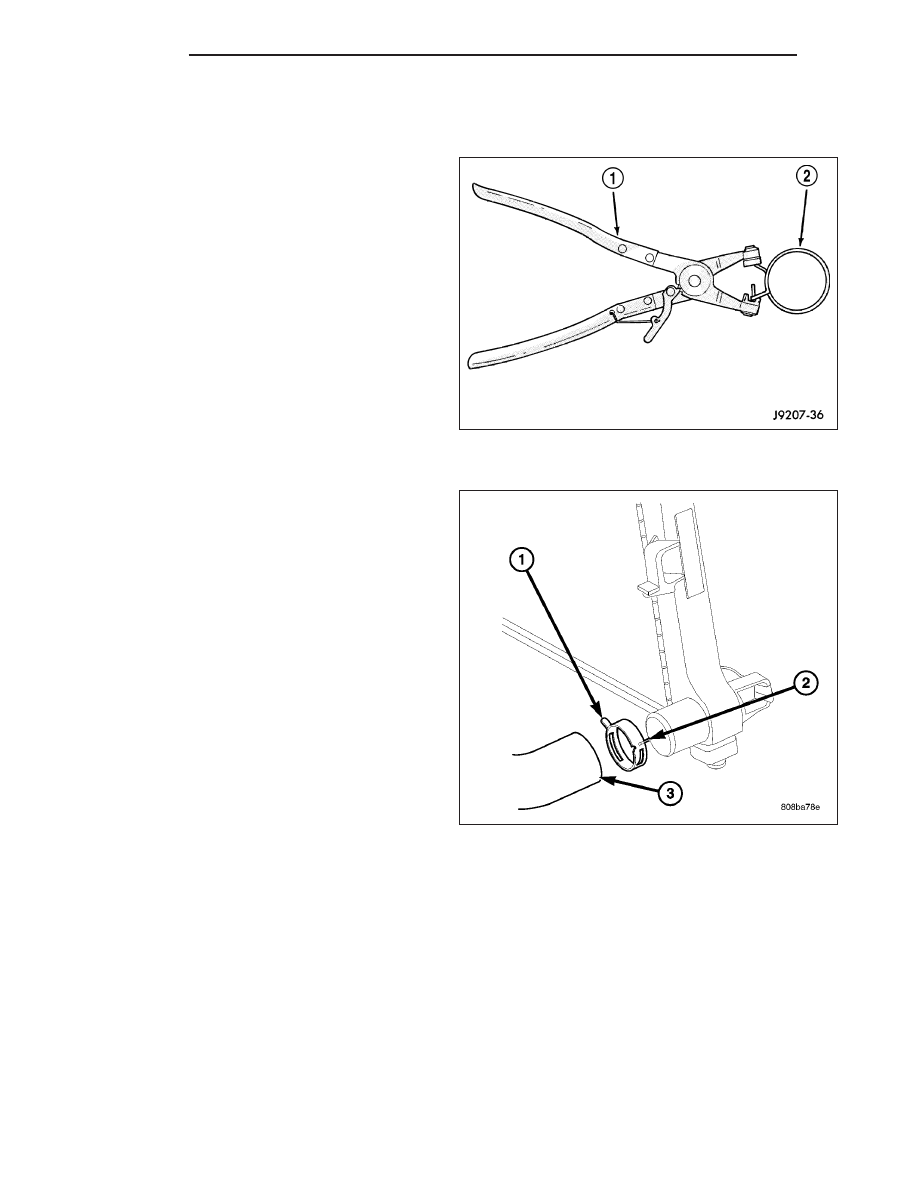Jeep Grand Cherokee WK. Manual - part 212

REMOVAL
GAS ENGINES
WARNING: DO NOT REMOVE THE CYLINDER
BLOCK DRAIN PLUGS OR LOOSEN THE RADIA-
TOR DRAINCOCK WITH THE SYSTEM HOT AND
UNDER
PRESSURE.
SERIOUS
BURNS
FROM
COOLANT CAN OCCUR. REFER TO COOLING
SYSTEM DRAINING.
Do not waste reusable coolant. If the solution is clean,
drain the coolant into a clean container for reuse.
WARNING: CONSTANT TENSION HOSE CLAMPS
ARE USED ON MOST COOLING SYSTEM HOSES.
WHEN REMOVING OR INSTALLING, USE ONLY
TOOLS DESIGNED FOR SERVICING THIS TYPE OF
CLAMP, SUCH AS SPECIAL TOOL 6094. ALWAYS
WEAR SAFETY GLASSES WHEN SERVICING CON-
STANT TENSION CLAMPS.
CAUTION: A number or letter is stamped into the
tongue of constant tension clamps. If replacement
is necessary, use only an original equipment
clamp with matching number or letter.
7 - 54
ENGINE
WK